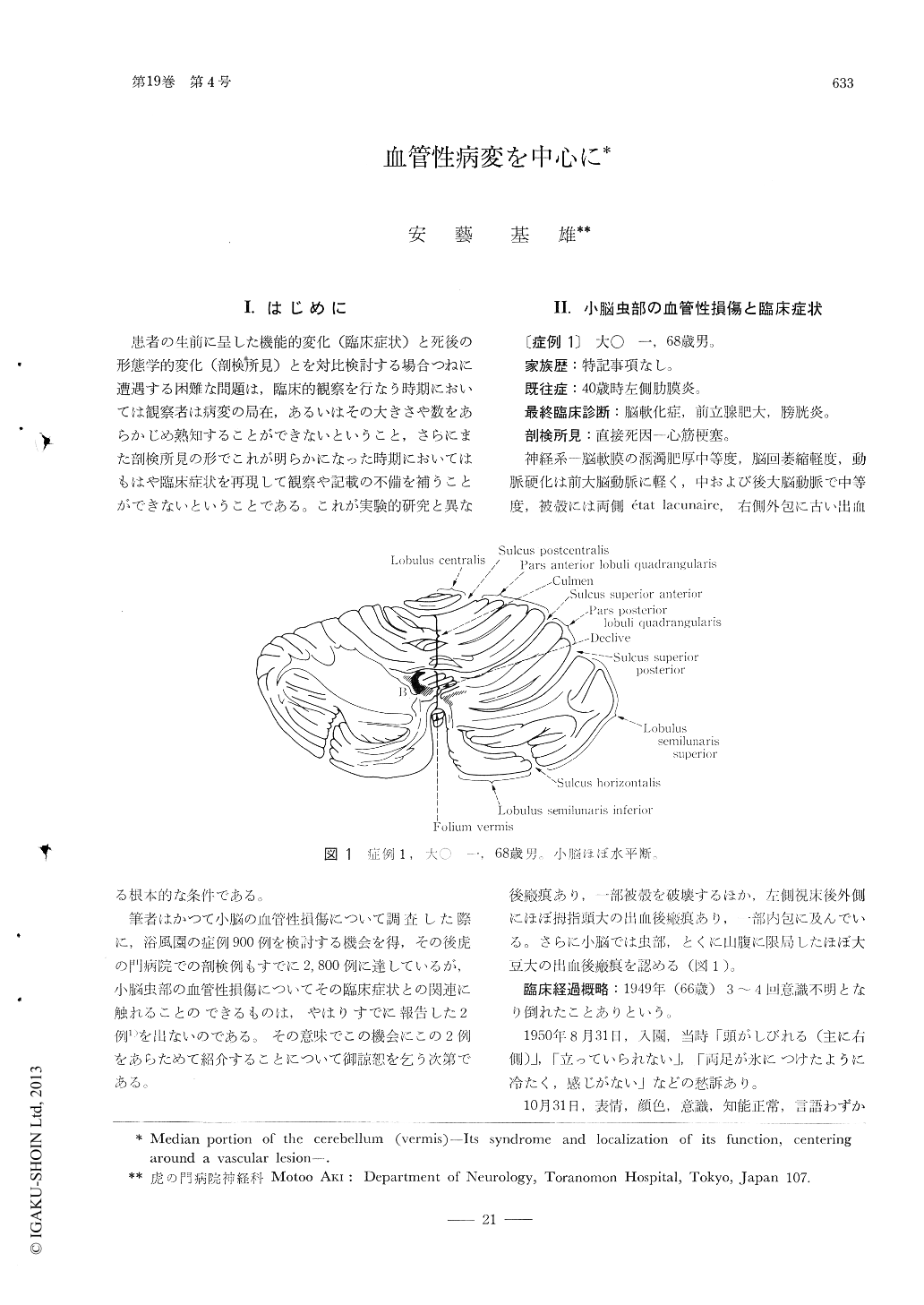Japanese
English
- 有料閲覧
- Abstract 文献概要
- 1ページ目 Look Inside
I.はじめに
患者の生前に呈した機能的変化(臨床症状)と死後の形態学的変化(剖検所見)とを対比検討する場合つねに遭遇する困難な問題は,臨床的観察を行なう時期においては観察者は病変の局在,あるいはその大きさや数をあらかじめ熟知することができないということ,さらにまた剖検所見の形でこれが明らかになった時期においてはもはや臨床症状を再現して観察や記載の不備を補うことができないということである。これが実験的研究と異なる根本的な条件である。
筆者はかつて小脳の血管性損傷について調査した際に,浴風園の症例900例を検討する機会を得,その後虎の門病院での剖検例もすでに2,800例に達しているが,小脳虫部の血管性損傷についてその臨床症状との関連に触れることのできるものは,やはりすでに報告した2例1)を出ないのである。その意味でこの機会にこの2例をあらためて紹介することについて御諒恕を乞う次第である。
Two patients with a relatively restricted lesion in superior vermis (chiefly in declive of monticulus) showed remarkable disturbances of equilibrium and locomotion, so-called truncal ataxia. Although this type of disturbances is also called "syndrome of the flocculonodular lobe" (Fulton and Dow), equilibrium of the body as a whole should be attributed not to this very small area of the cerebellum, but to the median portion, the entire vermis.

Copyright © 1975, Igaku-Shoin Ltd. All rights reserved.


